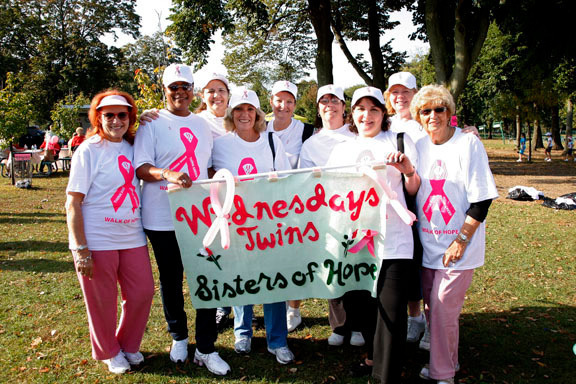‘The lifejacket that helps them stay afloat’
When Roseann Valletti of Valley Stream had her breasts removed over a year ago after she was diagnosed with breast cancer, she started looking for a support group that could help guide her through the next steps of recovery. It turned out that other members of 1 in 9’s Hewlett House — which offers free breast and other cancer support groups and classes — who had also undergone double mastectomies wanted the same thing.
Geri Barish, executive director of Hewlett House, made some calls last December and quickly put a group together to meet on Wednesdays. The women immediately bonded, and called themselves the Wednesdays Twins. Now, less than a year later, the 12 women took part in Hewlett House’s Oct. 4 Think Pink, Think Green 5K Walk, as part of National Breast Cancer Awareness Month.
“I never saw a group of women who developed immediate friendships,” Valletti said. “You know, when they say ‘kindred spirits.’ There’s so much sharing, there’s so much openness. There’s no secrets. There was an immediate love and a strong spirit for the group.”
A double mastectomy can be the last stand against a growing tumor or a preventive measure a patient may take when faced with a dim family history, gene abnormalities or a diagnosis of cancer in one or both breasts, according to Dr. Marisa Weiss, an oncologist in Pennsylvania and the founder and president of BreastCancer.org. Women may have better reconstructive results if both breasts are removed, Weiss added.
Whatever the reason, women who undergo the procedure lose a part of themselves. “When you lose an appendage, you grieve for that appendage,” Barish said. “When you lose two, because you are trying to save your life, it’s very different. It’s a double loss and you have to overcome that. We talk about reconstruction, but it’s still not yours. It’s a grieving process because it’s been a part of you for so long.”






